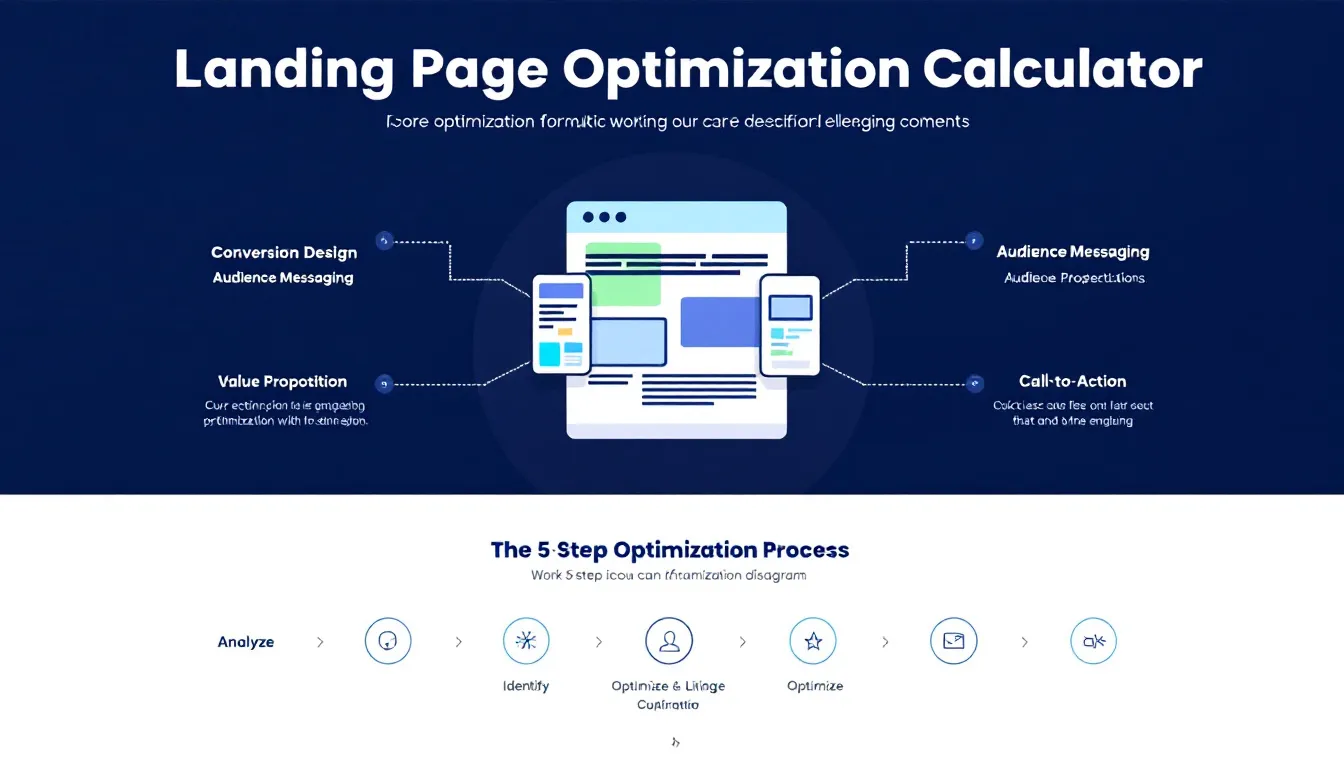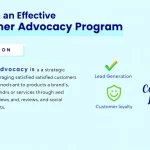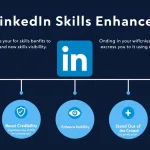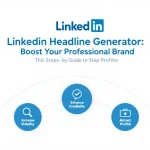Is this tool helpful?
How to Use the Tool Effectively
This landing page optimization suggestion tool helps you improve your paid search campaign results by providing tailored recommendations. To get the most out of it, carefully fill out the fields with accurate information about your business and campaigns.
Step-by-Step Guide for Each Field
-
Business Name: Enter your company or organization’s name clearly. Examples:
- “Sunrise Organic Market”
- “Tech Solutions Consulting”
-
Products or Services Description: Provide detailed information about what you offer to your customers. Examples:
- “We offer high-quality organic groceries, including fresh produce, dairy alternatives, and gluten-free options.”
- “Our consulting firm specializes in IT infrastructure optimization and cybersecurity assessments for small businesses.”
-
Target Audience Description: Define your ideal customer and their needs. Examples:
- “Young families in urban areas interested in sustainable and healthy food choices.”
- “Mid-sized companies looking to enhance IT security and improve network efficiency.”
- Current Campaign Details: Share key information about your existing paid search campaigns (optional). This helps the tool customize its suggestions.
- Landing Page URL: Add the URL of your current landing page (optional). This gives context for the optimization advice.
What This Landing Page Optimization Tool Does
This tool generates personalized recommendations to help you improve your paid search landing pages and boost campaign performance. It analyzes your business information, target audience, and campaign details to provide optimization advice tailored to your specific needs.
Why Optimize Your Landing Pages for Paid Search?
- Increase conversion rates: Make your landing pages more effective at turning visitors into customers.
- Reduce bounce rates: Keep visitors engaged longer by addressing their needs and expectations.
- Enhance ad relevance: Align landing page messaging with your ads to improve quality scores.
- Lower acquisition costs: Efficient pages improve ROI by reducing wasted ad spend.
Core Elements Addressed by the Tool
- Clear, benefit-driven headlines that grab attention
- Audience-specific content that speaks directly to your ideal customers
- Strategic call-to-action placement to guide visitor behavior
- Trust signals like testimonials, reviews, or guarantees
- Mobile-friendly design and fast page load times
Practical Use Cases for the Tool
Example 1: Local Bakery Optimization
- Before optimization: Conversion rate at 1.7%
- After optimization: Conversion rate increased to 3.9%
- Key changes: Added clear special offers, improved mobile experience, used customer testimonials
Example 2: Software SaaS Company
- Reduced bounce rate by 28%
- Lead signups increased by 45%
- Key improvements: Clear pricing options, targeted messaging for different user segments, trust badges from industry leaders
How the Tool Supports Effective Paid Search Marketing
1. Align Audience Expectations
It pinpoints gaps between your audience’s needs and your landing page messaging, making sure you resonate with the right customers.
2. Identify and Remove Conversion Barriers
The tool highlights common obstacles such as confusing navigation or unclear calls to action and suggests ways to simplify the user journey.
3. Ensure Consistent Messaging
It recommends ways to keep your landing page content aligned with your ad copy, strengthening visitor trust and engagement.
Recommended Process for Implementing Optimization Suggestions
- Analyze your current landing page performance and campaign metrics.
- Apply the suggested optimizations incrementally to isolate their impact.
- Run A/B tests to compare original and optimized versions.
- Monitor key performance indicators like conversion rate, bounce rate, and cost per conversion.
- Iterate your improvements based on data and user feedback.
Frequently Asked Questions About Landing Page Optimization
How often should I optimize my landing pages?
Optimize your pages regularly, ideally every 4 to 12 weeks, depending on traffic volume and campaign changes.
What makes an effective landing page for paid search?
An effective landing page offers clear, relevant messaging, fast load times, easy navigation, and compelling calls to action that align with the ad.
How soon can I expect to see results?
You typically notice improvements within 2 to 4 weeks after implementing changes, depending on visitor volume.
Can I optimize multiple landing pages at the same time?
Yes, but prioritize the pages with the highest traffic or most critical campaigns first to maximize impact.
Should I create separate landing pages for different ad campaigns?
Yes, dedicated landing pages for each campaign deliver better results by offering tailored content and messages.
How do I measure the success of my landing page optimization?
Track metrics such as conversion rate, bounce rate, average time on page, and cost per acquisition to evaluate performance improvements.
Best Practices for Landing Page Optimization
1. Technical Factors
- Ensure pages are fully responsive for mobile users
- Optimize page load speeds to reduce visitor drop-off
- Test compatibility across major browsers
- Create clear and intuitive navigation pathways
2. Content Guidelines
- Use concise, benefit-focused headlines that capture attention
- Organize content for easy scanning with subheadings and bullet points
- Include engaging visuals like images or videos that support your message
- Place strong, clear call-to-action buttons in visible spots
3. Testing and Measurement
- Establish baseline performance metrics before making changes
- Document each change to understand its impact
- Analyze user behavior and engagement data regularly
- Use A/B testing to validate optimization efforts
Important Disclaimer
The calculations, results, and content provided by our tools are not guaranteed to be accurate, complete, or reliable. Users are responsible for verifying and interpreting the results. Our content and tools may contain errors, biases, or inconsistencies. Do not enter personal data, sensitive information, or personally identifiable information in our web forms or tools. Such data entry violates our terms of service and may result in unauthorized disclosure to third parties. We reserve the right to save inputs and outputs from our tools for the purposes of error debugging, bias identification, and performance improvement. External companies providing AI models used in our tools may also save and process data in accordance with their own policies. By using our tools, you consent to this data collection and processing. We reserve the right to limit the usage of our tools based on current usability factors.







